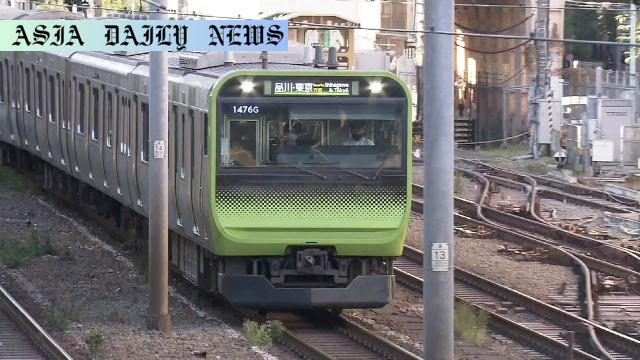JR East plans to raise train fares by 7.1% in March 2026, citing the need for safety and service improvements amid rising costs.
- JR East plans to implement a 7.1% fare hike in March 2026.
- The increase is needed for safety upgrades and service improvements.
- First across-the-board fare hike since JR East’s establishment in 1987.

Understanding JR East’s Fare Hike Announcement
East Japan Railway (JR East), Japan’s largest rail operator, has announced its decision to implement a 7.1% fare hike beginning in March 2026. This will signify the first system-wide increase since the company was founded in 1987, following the privatization of Japan National Railways. Except for minor adjustments related to consumption tax, fares have largely remained stable for decades. The hike aims to generate funds to enhance operational safety and improve customer services. The government has approved the move, underlining the necessity brought forth by the impacts of inflation and rising labor costs.
Investing in Safety and Innovation
JR East has announced its ambitious plan to invest over 400 billion yen, approximately 2.7 billion dollars, to overhaul its safety measures and expand service offerings. These developments come at a time when railroads are not only battling inflation but also facing higher operational costs resulting from rising wages and labor shortages. This fare increase is set to affect ticket prices widely, with baseline fares for single tickets increasing by 10 yen, bringing the minimum to 160 yen. Services alongside Tokyo’s highly frequented Yamanote Line may see higher increments comparatively. Despite this, JR East assures customers that the investment will bring about significant enhancements across the network, including better accessibility and cybersecurity upgrades.
Economic Climate and the Cost of Progress
The timing of JR East’s fare increase announcement coincides with a broader trend of rising costs across industries in Japan. Inflationary pressures have been challenging corporate profitability in the country for months. JR East, known for its resilience, has so far managed to maintain fare stability without altering core rates since it became a private entity. However, as global supply chains adjust to changing economic dynamics, this fare alteration is likely an inevitable byproduct of current economic realities. Infrastructure improvements that come with such investments may become a necessity for continued reliability and sustainability – qualities that Japanese rail systems are globally recognized for.
Impact on Passengers and Communities
The fare increase is expected to have varying impacts on passengers, with urban areas like Tokyo’s commuter belt bearing the brunt. For regular riders on the Yamanote Line, for instance, the increase could signify a noticeable rise in monthly commuting expenses. Nevertheless, JR East is advocating that customer benefits will outweigh the monetary burden as modernization efforts begin to materialize. Enhanced safety, better services, and advanced facilities will ensure a strengthened connection between communities, supporting economic growth indirectly by providing dependable transport infrastructure.
Looking Towards the Future
As JR East moves forward with its fare hike and development agenda, it continues to emphasize the necessity for balance between profitability and public satisfaction. The government’s approval of the proposed increase suggests recognition of the importance of JR East’s contribution to Japan’s public transit landscape. For commuters, this step indicates a concerted effort towards creating a more secure, efficient, and comfortable rail network. Commuters and critics alike will be watching closely to see how promises of improvement marry with increased responsibility for customers.



Commentary
Reflecting on JR East’s Bold Fare Hike
The announcement by JR East to raise train fares by an average of 7.1% comes as both a significant and strategic decision aimed at future-proofing its services. The idea of a fare hike might initially be met with hesitancy, especially for daily commuters facing rising living costs, but the justification presented holds merit. Infrastructure and safety investments are paramount in the context of public transportation. These systems carry millions of people daily, and any compromise on their safety or service quality could result in severe consequences. By taking proactive steps to fund enhancements, JR East demonstrates forward-thinking leadership.
Balancing Cost and Quality
One of the key challenges with this fare hike will be ensuring passenger acceptance. While the government has approved the plan, the general public will naturally question whether these cost increases translate into tangible improvements. Given that JR East plans to allocate over 2.7 billion dollars towards safety and services, it’s reasonable to expect visible upgrades in the coming years. Strengthened measures in accessibility, digital transformation, and security enhancements should be a priority as the company phases these changes across its network. Ensuring transparency in funding allocation may also help mitigate backlash and instill passenger trust.
The Broader Economic Implications
JR East’s fare hike indirectly reflects the economic pressures facing Japan’s industries. Inflation and higher labor costs present challenges for sustainable operations. In some ways, the fare hike can be seen as a microcosm of Japan’s broader economic adjustments, especially as industries and governments alike navigate the implications of a post-pandemic environment. This decision underscores the interconnectedness between economics, infrastructure funding, and public services. Ultimately, the hope is that JR East’s efforts successfully cushion the long-lasting reliability and reputation of Japan’s railways while maintaining public approval.